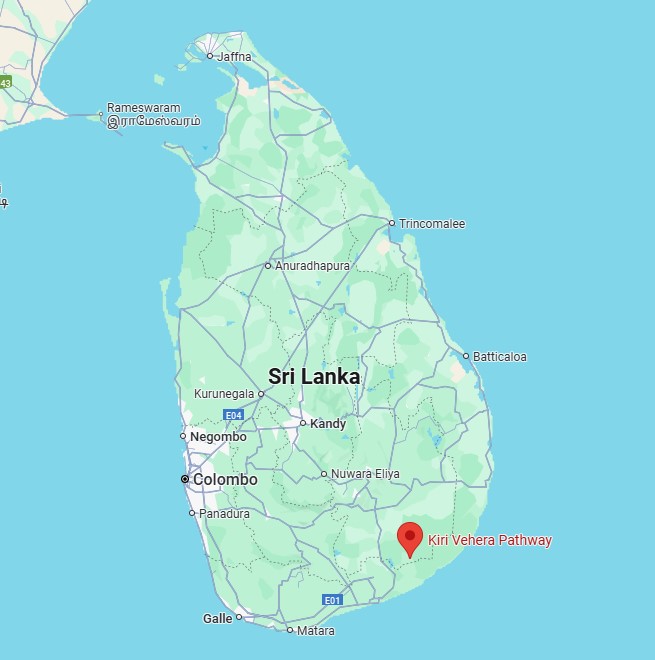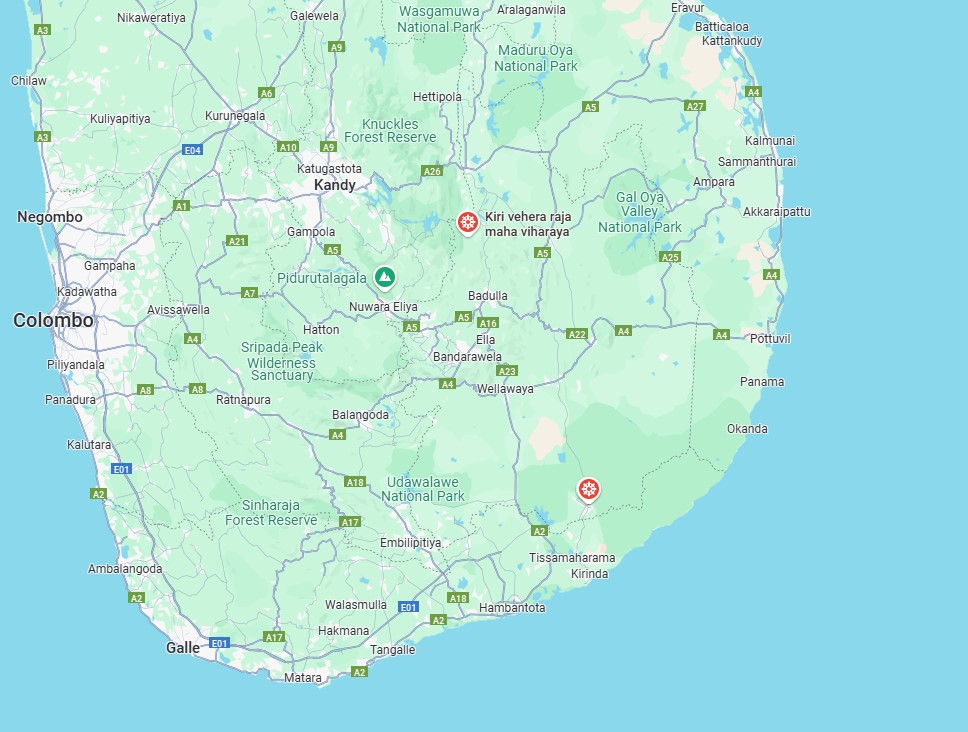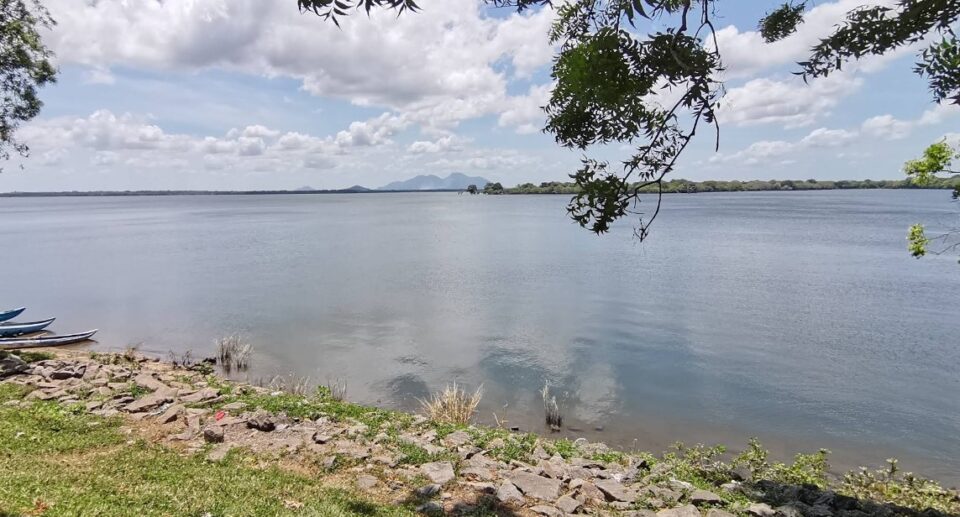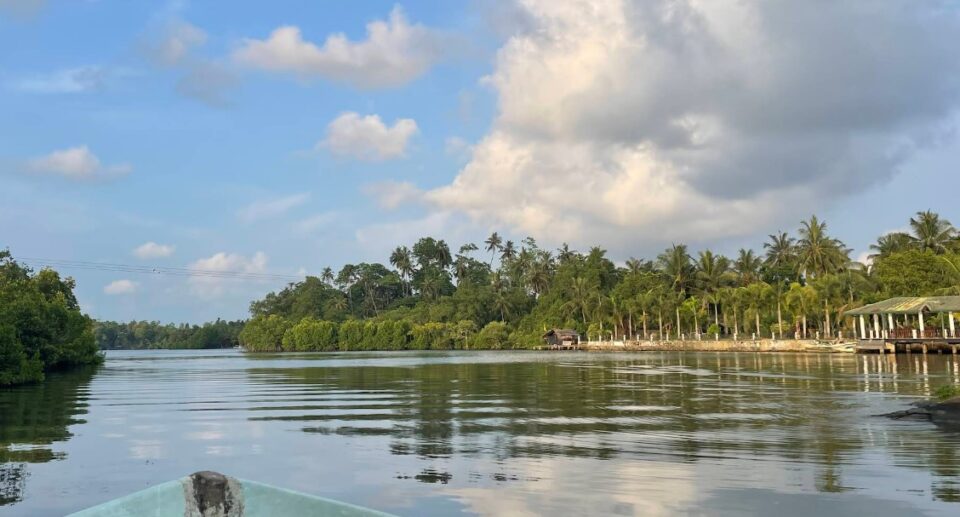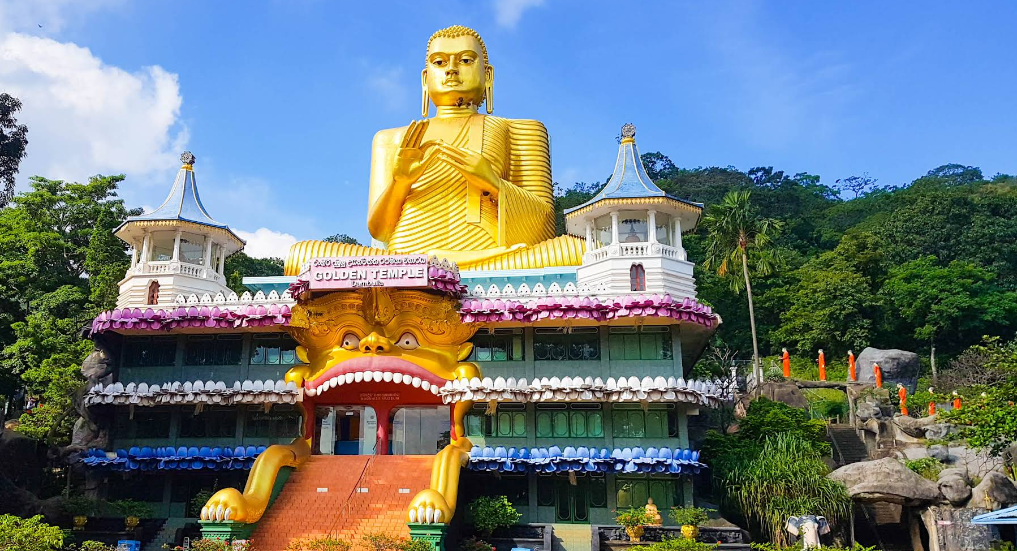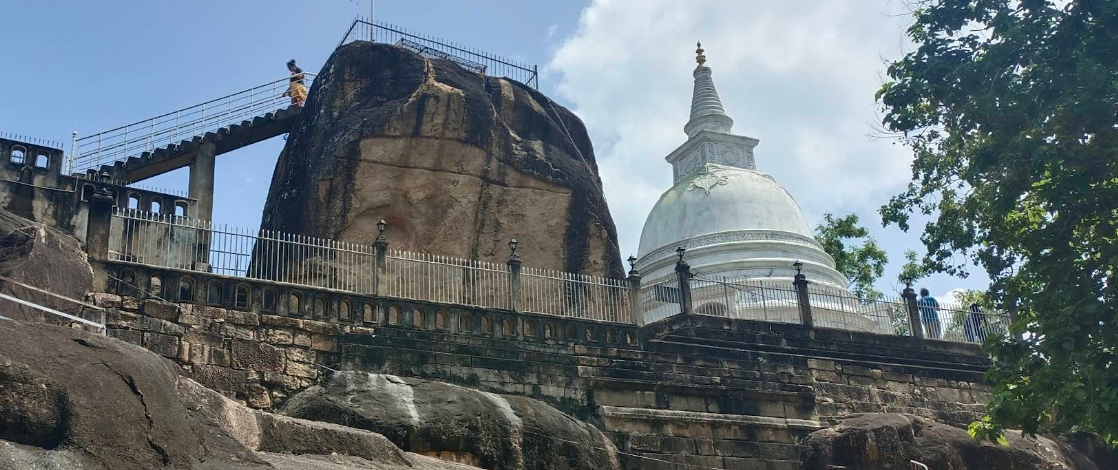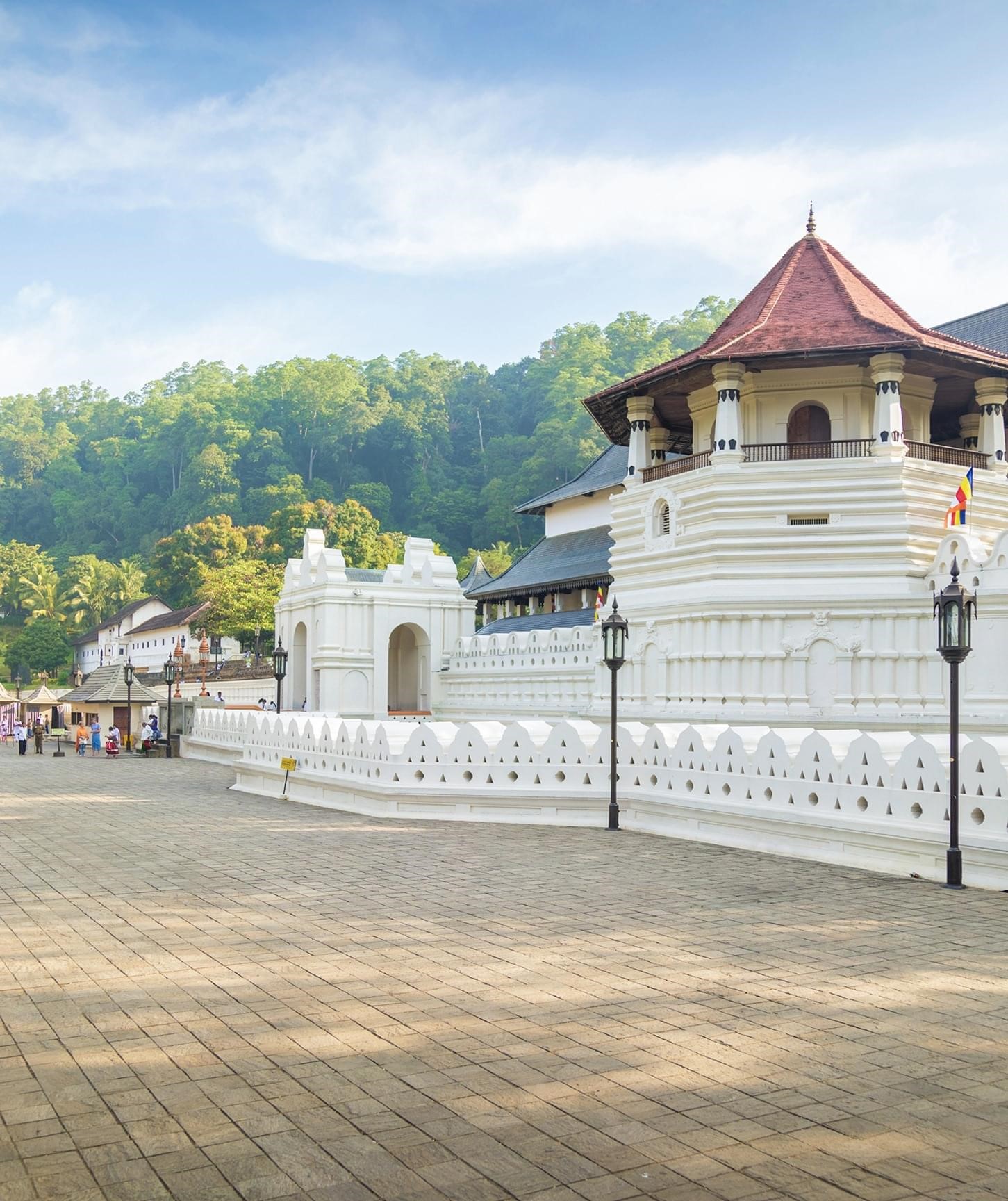Kiri Vehera, Kataragama: A Sacred Beacon of Buddhist Devotion
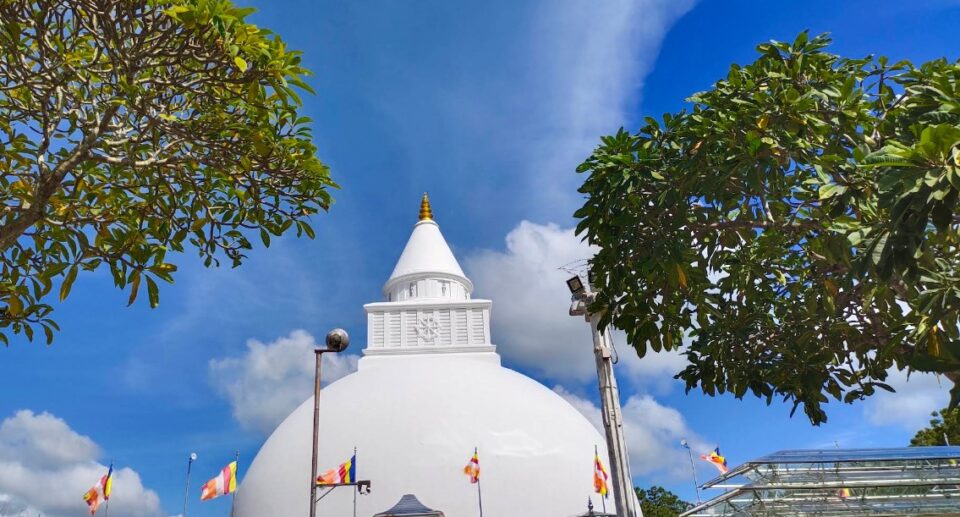
Located in the sacred city of Kataragama in Sri Lanka’s Southern Province, Kiri Vehera is arguably the most significant and sacred Buddhist stupa in the island. Majestic and white against the tropical blue, this ancient dagoba is not only an architectural marvel but also a centre of devotion that draws thousands of pilgrims annually. It is of deep religious importance to Buddhists and is part of the larger Kataragama sacred area, which is unique in that it is multi-religious in nature, with the area being revered by Buddhists, Hindus, Muslims, and even indigenous Veddas.
Kiri Vehera, or the “Milk Stupa” in Sinhala, is an epitome of purity, devoutness, and Sri Lanka’s ever-lasting religious heritage. Its pristine white facade and peaceful environment invite pilgrims as well as tourists alike to halt, reflect, and connect with centuries of tradition and spirituality.
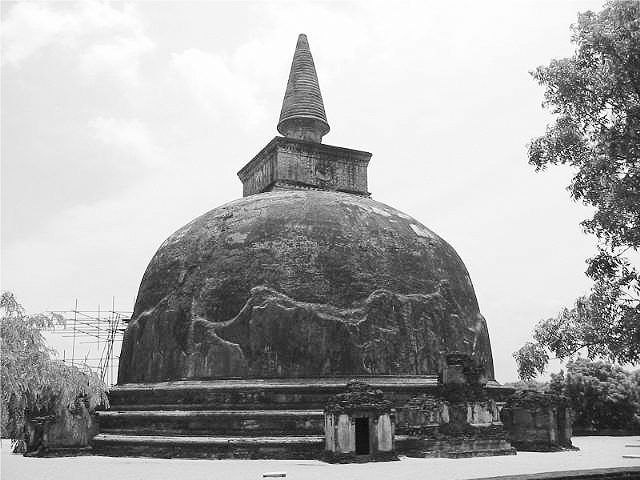
Historical Background
Kiri Vehera at Kataragama is said to have been built in the 3rd century BCE, in the time of King Mahasena, when he ruled the southern Ruhuna country. It is said that Lord Buddha himself visited this place during his third and last visit to Sri Lanka, some 2,500 years ago. In Buddhist tradition in Ceylon, he is believed to have traveled to encounter King Mahasena at Kataragama and delivered sermons that inspired the building of this stupa to enshrine the relics offered to the Buddha.
Ancient histories such as the Mahavamsa account for the introduction of Buddhism into Ruhuna in ancient days. Although ultimate archaeological proof of the Buddha’s visit remains doubtful, the tradition is a central part of Sri Lankan Buddhist heritage. Kiri Vehera thus stands as a building of legend as well as of faith, the realization of religious aspiration by early Buddhists in island southern parts.
Architectural Features
The architectural style of Kiri Vehera is similar to that of most of Sri Lanka’s ancient stupas. The stupa stands around 95 feet (29 meters) tall and is built on a circular foundation. It is in brick and lime plaster, with a domed body that is smooth, a square harmika (railing) on top, and the symbolic chatra (umbrella) structure that gives evidence of the site’s elevated status and spiritual significance.
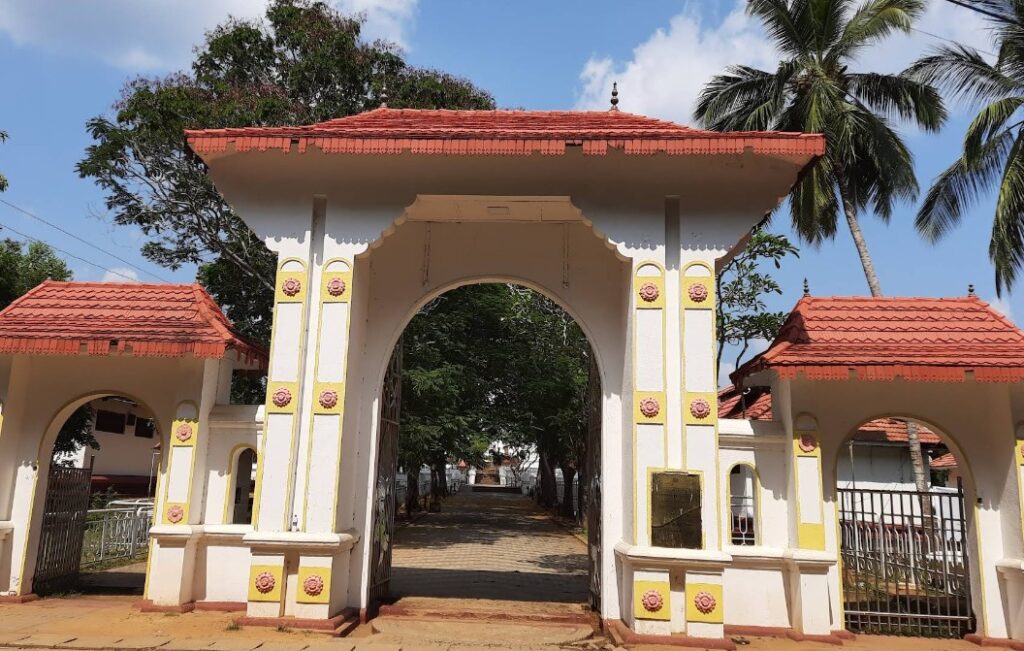
One of the most distinctive features of Kiri Vehera is its pure white exterior that denotes spiritual purity and enlightenment. The minimalistic design of a stupa for a site such as this is an addition to the site’s religious holiness. Pilgrims are seen to walk around the building in a clockwise manner (pradakshina) circumambulating the stupa, reciting prayers or meditating.
Around the stupa are several ancient stone inscriptions, remnants, and ruins of monastic buildings, which indicate that the site was an active site of Buddhist monasticism previously. Even today, Kiri Vehera remains maintained by a resident group of monks.
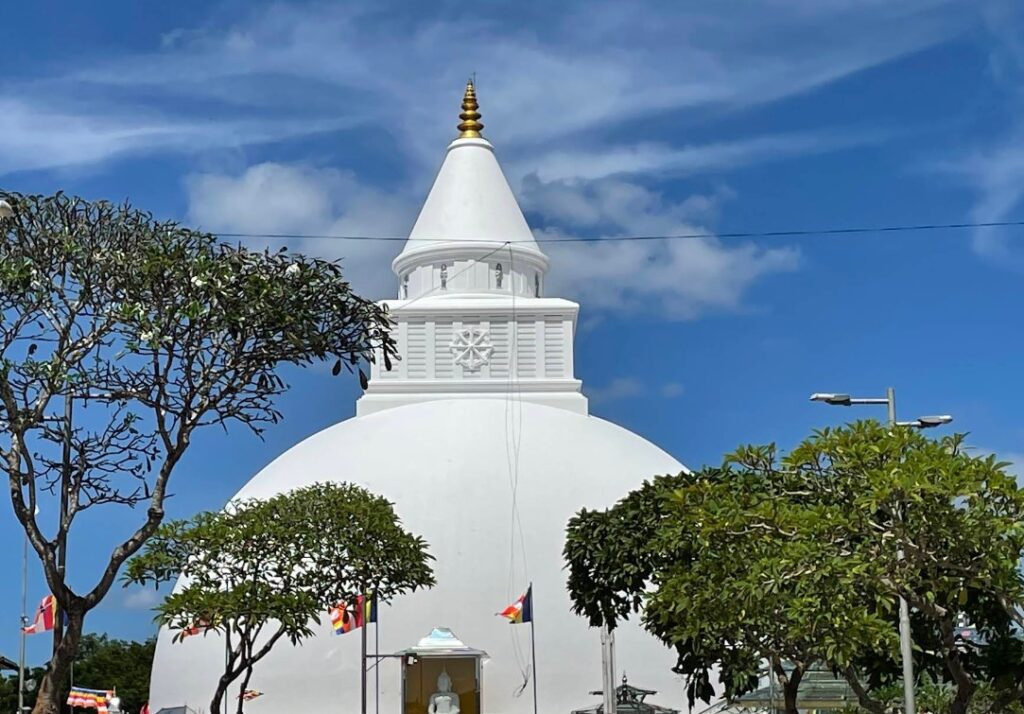
Spiritual and Religious Significance
Kiri Vehera is a much venerated Buddhist temple in southern Sri Lanka that is one of the island’s body of sixteen most holy places (Solosmasthana) said to have been visited by the Buddha. Its holiness gives stupendous religious significance to the site, attracting pilgrims from all over the country, most notably at the Esala Festival, when thousands of pilgrims take long and sometimes arduous journeys—some even on foot to fulfill promises and make offerings.
The stupa is particularly revered for being a shrine of relics, purportedly holding the physical remains of the Buddha, including hair and body parts, which lends it sacredness. Pilgrims visit the location to pray for good health, protection, and spiritual wellness.
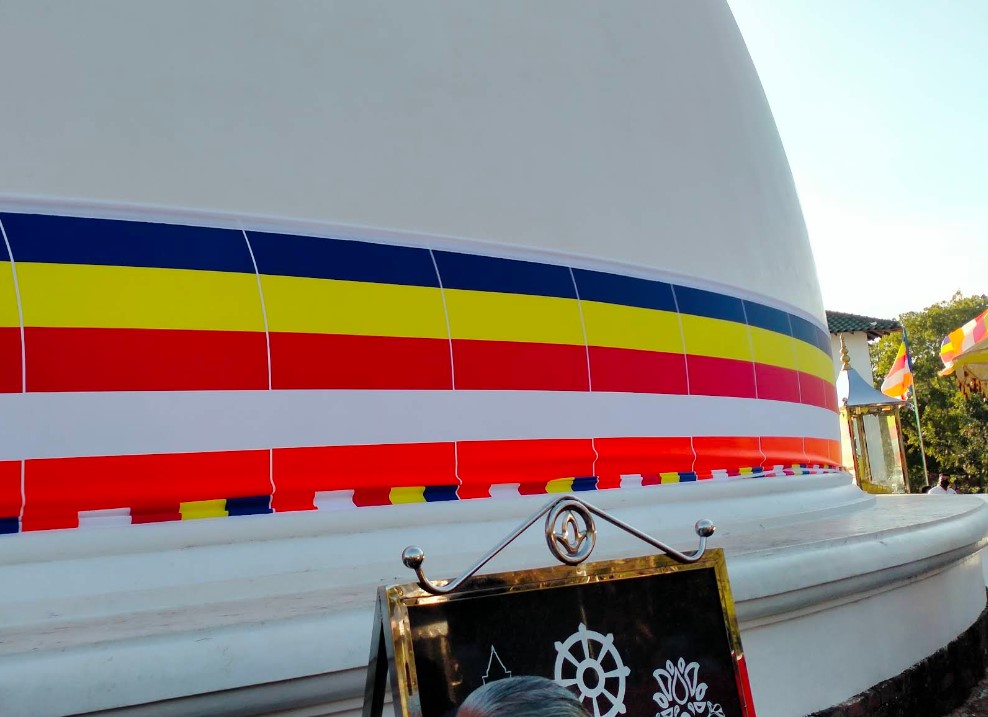
Kiri Vehera is also unique because it is located alongside Kataragama Devalaya, a native shrine of Skanda (Kataragama Deviyo), who is worshipped by Buddhists, Hindus, and even Muslims within each of their native faith practices. The location of Kiri Vehera alongside the multi-faith shrine results in the Kataragama sacred precinct being a rare instance of interfaith worship and harmony in the region.
Pilgrimage and Worship Practices
A pilgrimage to Kiri Vehera is a religious exercise for Sri Lankans. Most pilgrims begin their pilgrimage at Kataragama Devalaya and continue their journey to Kiri Vehera to complete their rituals. Incense, flowers, oil lamps, and bodhi leaves are offered with devotion. Some pilgrims follow the sil (precepts) of the day, meditate, or engage in acts of penance.
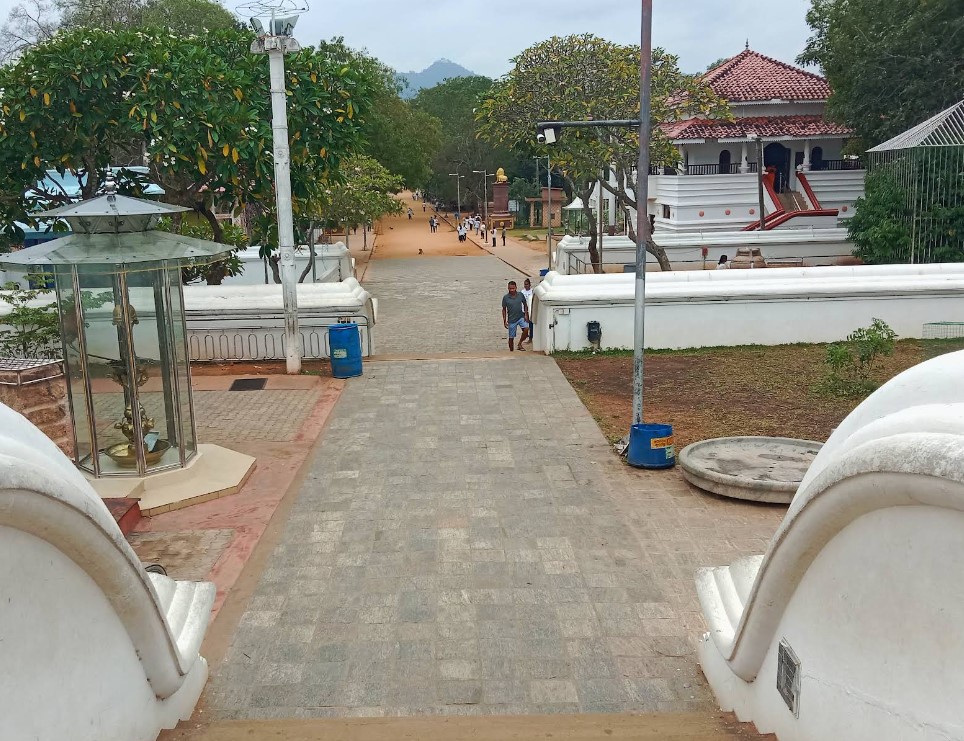
One of the major traditions associated with Kiri Vehera is “penance walks” or “Pada Yatra”, whereby pilgrims walk for weeks or even months from outlying areas of the country, specifically the Eastern Province, to reach Kataragama. Such pilgrimages are typically physically demanding and spiritually stimulating, and typically result in devotion at Kiri Vehera.
The Esala Festival (July or August) is the most vibrant and colorful festival in the Kataragama Buddhist religious calendar. During this festival, the devotees engage in processions, fire-walking, kavadi dancing, flag-bearing, and offering ceremonies, and Kiri Vehera is a focal point of Buddhist worship during this time.
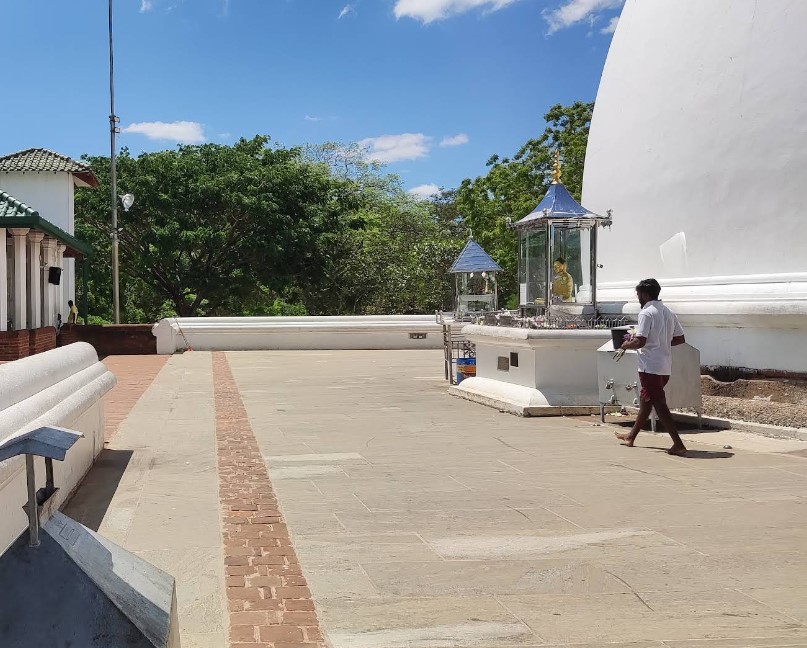
Conservation and Management
The Kiri Vehera is managed by the temple committee of the Kiri Vehera Raja Maha Viharaya, and it is a protected historic site managed by the Sri Lanka Department of Archaeology. There have been different types of conservation processes carried out over time to stabilize the structure, improve pilgrims’ access, and manage the sacred area around it.
Efforts have been made to advance the environmental cleanliness of the site, educate visitors, and manage pilgrim traffic so as not to damage the historical landmark. Even with the large influx of tourists, the stupa still has a peaceful atmosphere.
Cultural and Educational Importance
Kiri Vehera is an open space for everyone who is interested in studying Buddhism, history, archaeology, and culture. The monument draws school children, university students, and researchers, who study the ancient Sri Lankan religious faith and architecture. It also encourages poets, artists, and writers, who research the island’s spiritual and cultural heritage.
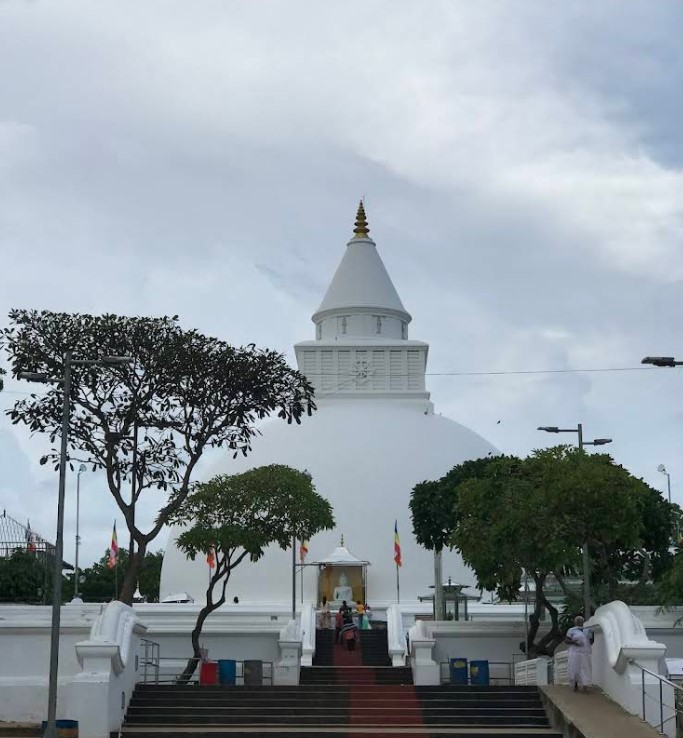
The stupa is not just a religious shrine but also a national symbol of peace, harmony, and strength. In a country with a great, complex history of religion, Kiri Vehera stands for the spirit of common spirituality and respect that has dominated over centuries.
Kiri Vehera at Kataragama is not only a very ancient stupa, but also a witness to Sri Lanka’s richness of spirituality, religious tolerance, and cultural continuity. Glorified by millions and guarded with devotion, the stupa submits its awe-inspiring figure as a temple of Buddhist worship and a bond between history and contemporary times. Its divine presence, spiritual legacy, and tranquil beauty inspires newer generations of pilgrims and tourists to be touched by its ageless splendor.
With the world speeding up and fragmenting, sacred places like Kiri Vehera offer sanctuary for reflection, interior peace, and unity with the divine, with heritage, and with one another. Trekked to by a humble pilgrim in debt or an inquiring traveler on the hunt for meaning, Kiri Vehera welcomes all in its timeless message of empathy, consciousness, and spiritual elevation.
Kiri Vehera is located in Kataragama, a famous pilgrimage town in the Monaragala District, in the Uva Province of southern Sri Lanka. It is part of the Kataragama sacred complex, which includes the Kataragama Devalaya.
From Colombo (Approx. 290 km)
By Bus:
- Go to Colombo Bastian Mawatha Bus Terminal (Pettah).
- Take a direct bus to Kataragama (Route No. 32/1 or via Embilipitiya).
- Travel time: 8–10 hours.
- Buses run during the day and night. A/C and non-A/C options available.
- From the Kataragama bus stand, it’s a 5–10 minute walk or short tuk-tuk ride to Kiri Vehera.
By Car or Taxi:
- Route: Colombo → Southern Expressway (E01) → Matara → Hambantota → Kataragama.
- Travel time: 6–7 hours.
- You can use Google Maps; search “Kiri Vehera Kataragama”.
- Roads are in good condition, especially via the expressway.
From Ella or Badulla:
- Travel via Wellawaya and Buttala toward Kataragama.
- Buses or taxis available from Ella (about 3 hours) or Badulla (about 4 hours).
- This is a common route for tourists staying in Uva Province.
From Galle or Matara:
- Use the A2 road or Southern Expressway (E01).
- Travel time: 4–5 hours by bus or car.
Reaching Kiri Vehera in Kataragama Town
- Kiri Vehera is inside the Kataragama Sacred City, just a short walk from the Kataragama Devalaya.
- Signage and local directions are easy to follow.
- Tuk-tuks and taxis are available around town.
